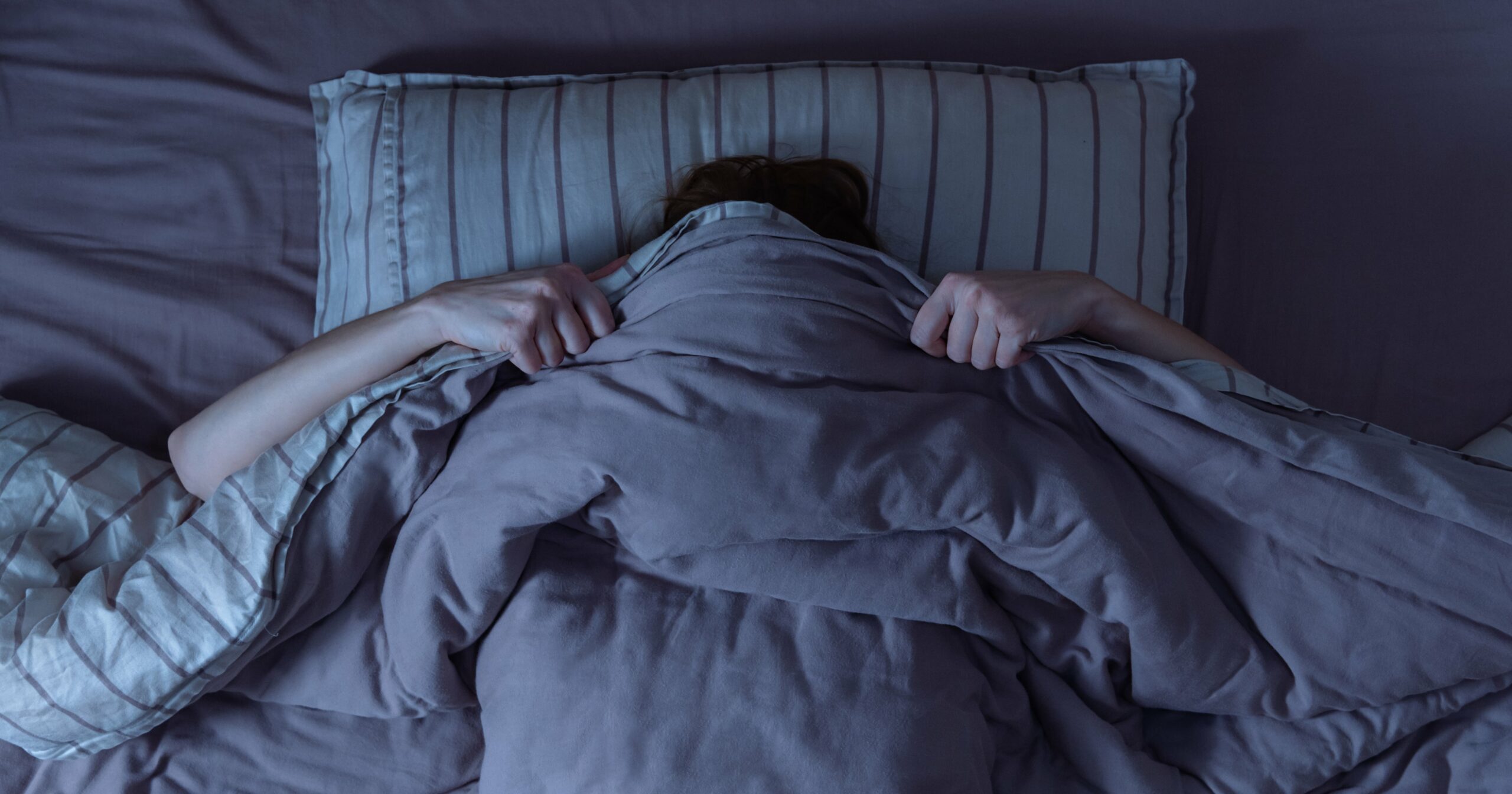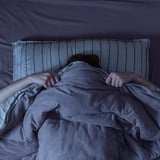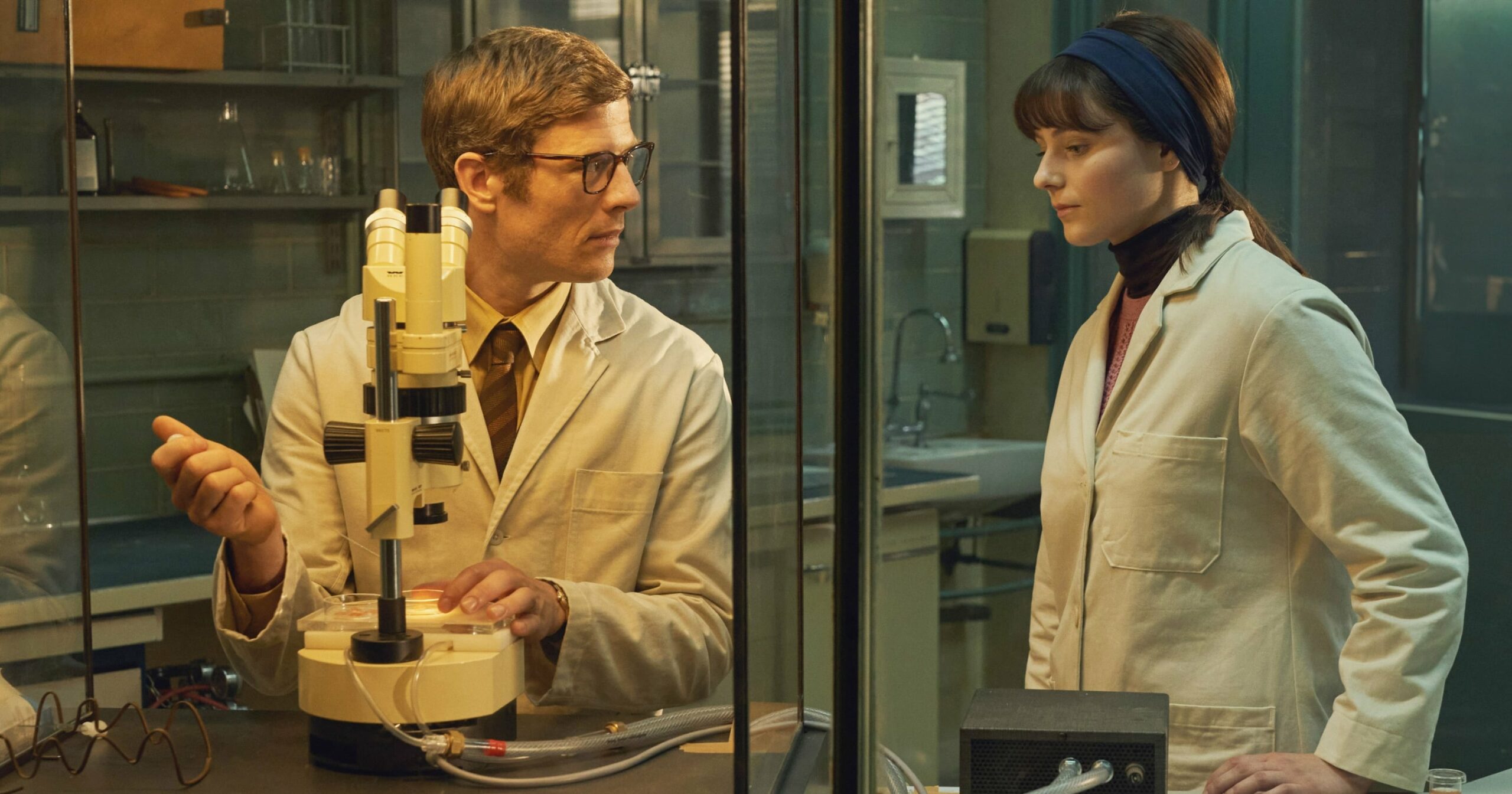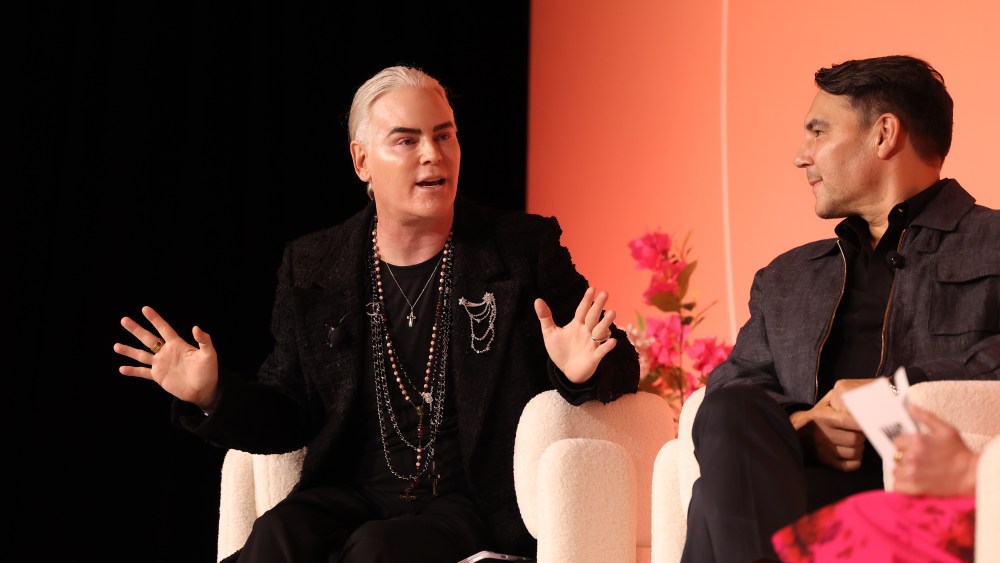I can’t breathe. There’s a tremendous pressure in my chest. I’m panicking, and then I realize I can’t move. I try to scream. Suddenly, violently, I’m startled awake, sweaty, shaking, and disoriented. I thought I was awake. This is when it hits me: no, I’m not going to die – it’s just another terrifying episode of sleep paralysis.
Sleep paralysis is “a temporary inability to move or speak that happens when you’re waking up or falling asleep,” says Chris Allen, MD, board-certified sleep medicine physician, pediatric neurologist, and sleep science advisor at Aeroflow Sleep. “During an episode, you may be conscious but feel trapped in your body.”
I first began experiencing episodes of sleep paralysis at about 14 years old and quickly developed a unique coping mechanism: I told myself I was just having a really, really bad recurring nightmare, and then I would microwave a frozen bean burrito and eat it with a truly disgusting amount of sour cream while watching reruns of “Roseanne.” Around 2 or 3 a.m., I would reluctantly return to bed, where I would lie in complete terror until I finally fell asleep.
I’d spend the following day sleeping through all my classes and likely repeat some version of the cycle that evening. My entire high school career consisted of me reeling from episodes of sleep paralysis or consumed by anxiety that another attack was just around the corner. For whatever reason, I never told anyone what was happening to me at night. I thought it would be childish of me to admit I was afraid by what I thought were just nightmares.
I didn’t know it at the time, but I was the perfect candidate for sleep paralysis. According to Shelby Harris, PsyD, a licensed clinical psychologist specializing in behavioral sleep medicine and the director of Sleep Health at Sleepopolis, this sleep disorder affects about 8 percent of people. It’s more common in teens and young adults and people with a history of anxiety, depression, and PTSD. Check, check, and check: I had panic attacks and OCD, was on and off antidepressants, and could not be home alone even during the daytime until I was 19 due to an incident when someone tried to come through my unlocked bedroom window at 2 a.m.
My late-night sleep paralysis-induced burrito binges caused loads of stomach issues, along with such severe acid reflux that the enamel on my teeth started to wear away.
But life went on. Eventually, I found an antidepressant that worked for me. I started taking better care of myself by eating healthier and exercising, and at 22, I married a guy I had been in love with since the 6th grade. Finally, I began to sleep better. I still found myself awake at ungodly hours, but I wasn’t in constant fear that another episode of sleep paralysis was around the corner.
At 30, everything changed. My husband and I divorced, I changed jobs, and I moved into a little apartment in a neighboring state. I was broke and heartbroken, and my episodes of sleep paralysis (which I’d never mentioned to anyone, and still thought were extremely bad nightmares or a sign that I was mentally ill) came back with a vengeance and a new and exciting feature: hallucinations!
I began having what I now know are intruder hallucinations. I would wake up in the middle of the night on my sad, borrowed futon and see a large man standing where a bedroom door would have been had I not been living in the world’s smallest studio. I would just lay there wondering what people would say at my funeral until I realized I was staring down the old Victorian desk in my living area.
While most of us recognize two primary states of consciousness – awake and asleep – modern neuroscience reveals the concept of “local sleep” where various parts of the brain essentially “go offline.” “Sleep paralysis is a good example of this phenomenon,” says Jonathan Berent, the CEO and founder of NextSense, a health tech company developing brain-sensing technologies. “Some parts of your brain are asleep or are in the process of falling asleep. Other parts, such as the prefrontal cortex, are still activated and alert, registering the experience in the conscious mind,” Berent tells PS. This is why my sleep paralysis feels so real and not at all dreamlike.
Around this time, I began watching “Keeping Up With the Kardashians.” During one particularly riveting episode, Kendall is reviewing her upcoming European modeling schedule when she tells her mom Kris that she doesn’t want to travel because of her sleep paralysis. “I’m scared to fall asleep,” she says.
Immediately, I Googled “sleep paralysis” and read article after article on the sleep disorder that had been plaguing me on and off for most of my life. I could not believe it was real, and I was equally astonished that this life-changing breakthrough resulted from my affinity for trash reality television.
While putting a name to my sleep disorder was enlightening, I didn’t have a handle on the most significant contributor to my sleep paralysis – stress. According to Dr Allen, many factors, including sleep deprivation, irregular sleep schedules, sleep disorders, mental health conditions, and even the position you sleep in, can put you at higher risk for this sleep disorder. Stress has always been the most significant indicator that I’m about to wake up in a cold sweat, fearing for my life. You’re also more likely to develop this condition in your teens.
So, I started doing yoga, adopted a much healthier diet, took long walks, and began therapy. I stress-cleaned my apartment so frequently and with such intensity that when I moved out three years later, I was the first tenant to get their entire $500 deposit back.
Today, I’m the healthiest I’ve ever been. I rarely have episodes of sleep paralysis unless my stress levels get out of control. But I’m mostly able to manage them through yoga, long walks, or breathwork, which I practice with my therapist.
Of course, no one is perfect, and I don’t always take care of myself perfectly, mentally or physically. And, sadly, I still sleep on an old brown futon. But now that I have a better understanding of what sleep paralysis is and what causes it, these days my fear of sleep is nothing more than a bad dream.
Melissa Persling writes about mental health, beauty, and relationships. In addition to PS, her work has been featured in The Observer, Stylist UK, and Business Insider.




